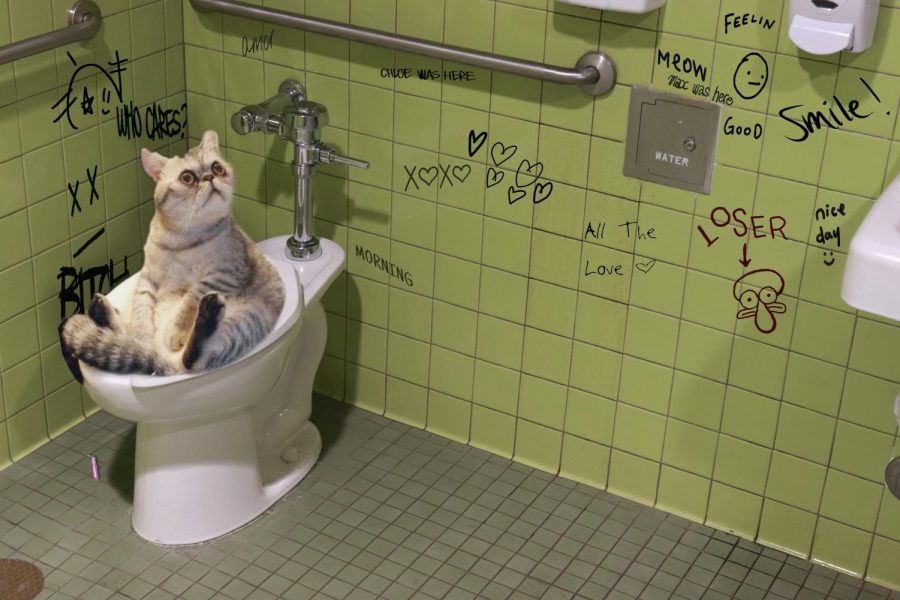We have found this great article on Don’t flush cat feces down the toilet down the page on the web and reckoned it made good sense to share it with you on this site.

Introduction
As feline owners, it's important to be mindful of exactly how we deal with our feline good friends' waste. While it might appear practical to flush pet cat poop down the commode, this practice can have detrimental effects for both the setting and human wellness.
Ecological Impact
Purging cat poop presents dangerous pathogens and parasites right into the supply of water, posing a considerable threat to aquatic environments. These impurities can adversely impact marine life and concession water top quality.
Health Risks
Along with environmental issues, purging feline waste can additionally pose health and wellness dangers to human beings. Feline feces might have Toxoplasma gondii, a bloodsucker that can cause toxoplasmosis-- a possibly extreme disease, particularly for expectant women and people with damaged body immune systems.
Alternatives to Flushing
The good news is, there are safer and much more responsible methods to dispose of cat poop. Think about the complying with choices:
1. Scoop and Dispose in Trash
The most common technique of throwing away feline poop is to scoop it into an eco-friendly bag and throw it in the garbage. Make certain to make use of a committed trash scoop and dispose of the waste without delay.
2. Use Biodegradable Litter
Opt for naturally degradable cat litter made from materials such as corn or wheat. These trashes are eco-friendly and can be safely taken care of in the trash.
3. Hide in the Yard
If you have a lawn, take into consideration burying pet cat waste in a marked location away from vegetable yards and water sources. Make certain to dig deep sufficient to avoid contamination of groundwater.
4. Install a Pet Waste Disposal System
Buy a family pet waste disposal system specifically created for feline waste. These systems utilize enzymes to break down the waste, minimizing odor and ecological effect.
Conclusion
Liable animal possession prolongs beyond providing food and shelter-- it also entails appropriate waste administration. By avoiding flushing feline poop down the toilet and choosing alternate disposal techniques, we can decrease our ecological footprint and shield human health and wellness.
Why Can’t I Flush Cat Poop?
It Spreads a Parasite
Cats are frequently infected with a parasite called toxoplasma gondii. The parasite causes an infection called toxoplasmosis. It is usually harmless to cats. The parasite only uses cat poop as a host for its eggs. Otherwise, the cat’s immune system usually keeps the infection at low enough levels to maintain its own health. But it does not stop the develop of eggs. These eggs are tiny and surprisingly tough. They may survive for a year before they begin to grow. But that’s the problem.
Our wastewater system is not designed to deal with toxoplasmosis eggs. Instead, most eggs will flush from your toilet into sewers and wastewater management plants. After the sewage is treated for many other harmful things in it, it is typically released into local rivers, lakes, or oceans. Here, the toxoplasmosis eggs can find new hosts, including starfish, crabs, otters, and many other wildlife. For many, this is a significant risk to their health. Toxoplasmosis can also end up infecting water sources that are important for agriculture, which means our deer, pigs, and sheep can get infected too.
Is There Risk to Humans?
There can be a risk to human life from flushing cat poop down the toilet. If you do so, the parasites from your cat’s poop can end up in shellfish, game animals, or livestock. If this meat is then served raw or undercooked, the people who eat it can get sick.
In fact, according to the CDC, 40 million people in the United States are infected with toxoplasma gondii. They get it from exposure to infected seafood, or from some kind of cat poop contamination, like drinking from a stream that is contaminated or touching anything that has come into contact with cat poop. That includes just cleaning a cat litter box.
Most people who get infected with these parasites will not develop any symptoms. However, for pregnant women or for those with compromised immune systems, the parasite can cause severe health problems.
How to Handle Cat Poop
The best way to handle cat poop is actually to clean the box more often. The eggs that the parasite sheds will not become active until one to five days after the cat poops. That means that if you clean daily, you’re much less likely to come into direct contact with infectious eggs.
That said, always dispose of cat poop in the garbage and not down the toilet. Wash your hands before and after you clean the litter box, and bring the bag of poop right outside to your garbage bins.
https://trenchlesssolutionsusa.com/why-cant-i-flush-cat-poop/

As a serious person who reads on Can You Flush Cat Poo or Litter Down the Toilet?, I assumed sharing that excerpt was a great idea. Do you know about another individual who is excited by the topic? Why not share it. Thanks a lot for going through it.
Order Repair